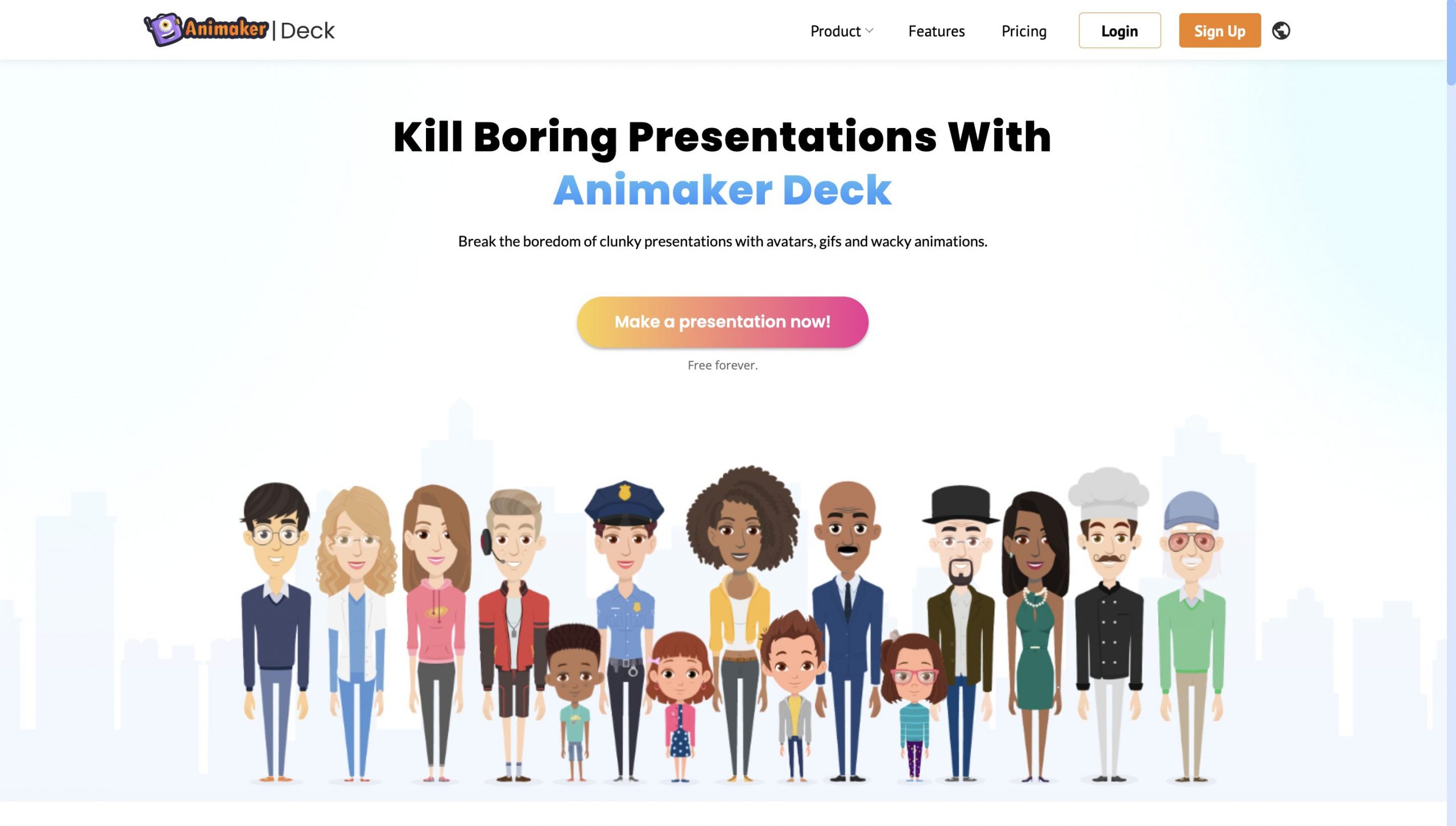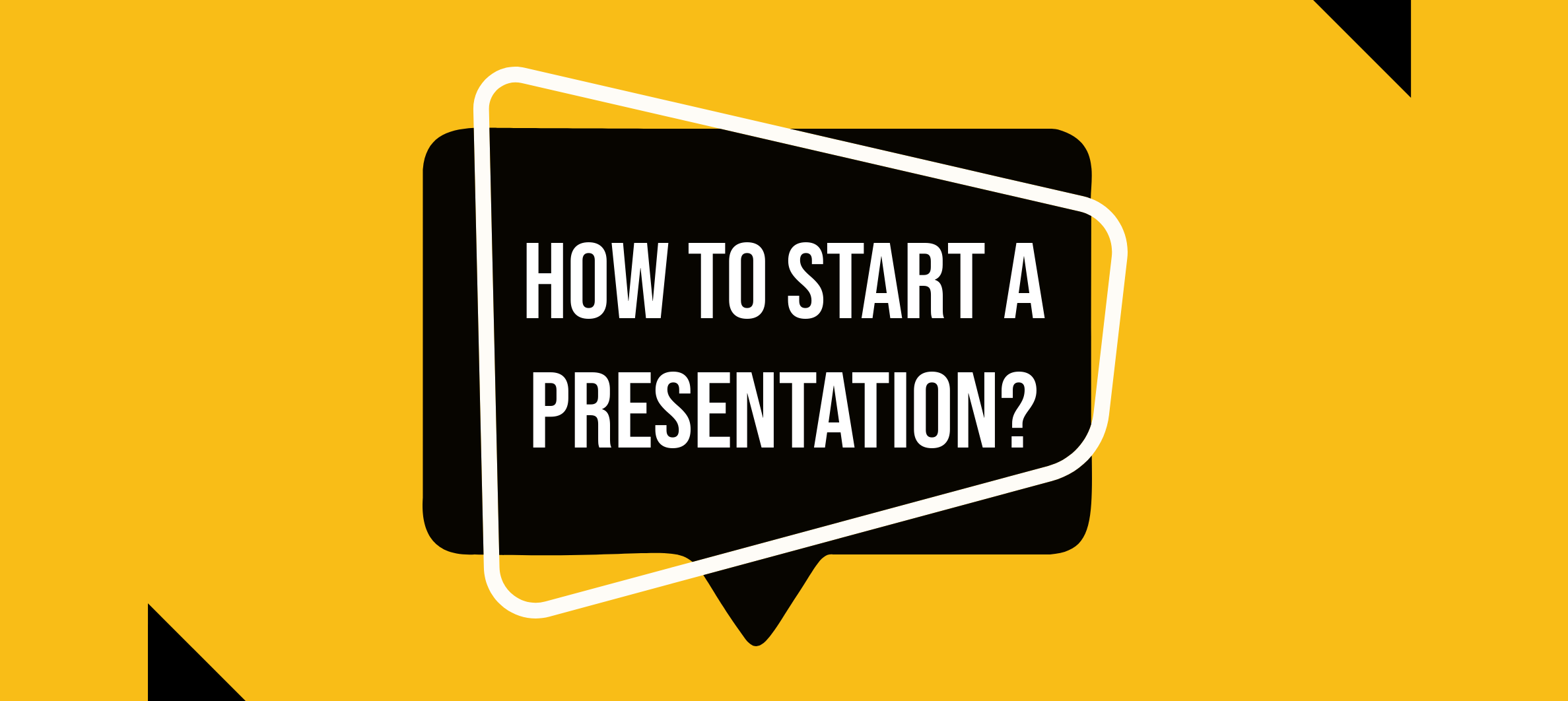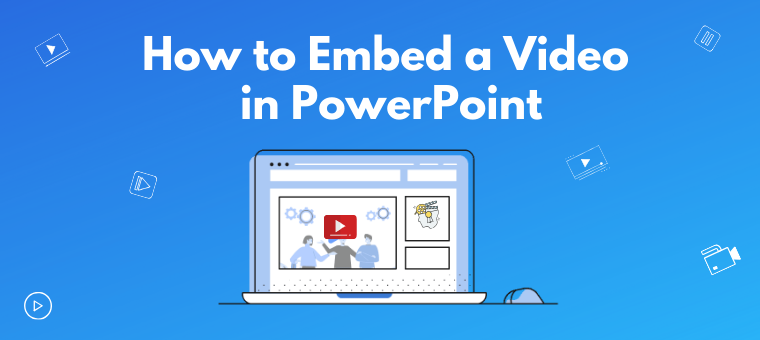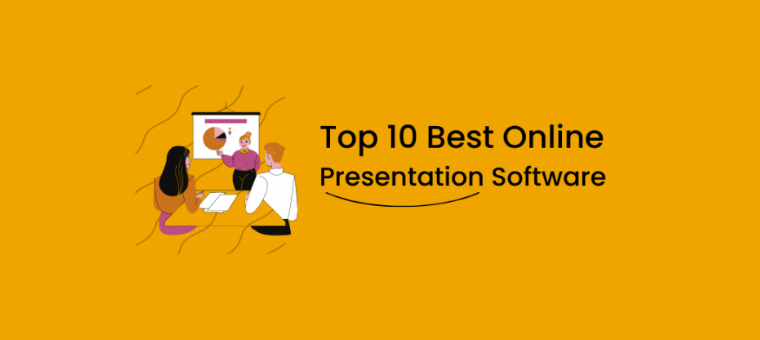How to Start a Presentation - 11 Proven Tips For A Killer Start
How you start a presentation is crucial, as it can make or break the entire experience for the audience.
It's crucial to grab the audience's attention from the get-go. Otherwise, they'll lose interest and tune out.
This is especially important when presenting to larger crowds, like at a conference or when trying to win bids over prospective customers.
Most of us would have watched videos of how influential people have addressed their audience.
Steve Jobs’s presentation for the launch of the iPhone in 2007 was one of the most successful product launches to date.
Martin Luther King’s “I have a dream” is another prime example of a powerful speech.
Not to forget former President-Elect Obama’s term-winning speech in Chicago!

We have observed and learned a lot from these powerful presentations, how these legends addressed a large audience and kept their speech engaging throughout.
In this blog, we have listed the 11 proven strategies on how to start a presentation and hook your audience until the end like a Pro.
So, if you are nervous about starting a presentation or often find yourself stumbling over your words and forgetting what you want to say, you have come to the right place!
Don't let the fear of starting a presentation hold you back. With our expert strategies, you'll be able to start like a pro, impress your audience, and leave a lasting impression.
So, let's get started!
11 Ways To Start Your Presentation
- Use an inspiring quote
- Use the power of image
- Open with a leading question
- Start with a little test
- Start with a short story
- Start with a touch of humor
- Start with “Picture this..”
- Spark interest with Animated Characters
- Introduce yourself to your audience
- Surprise your audience
- Start with Silence
1. Use an inspiring Quote
One of the easiest ways to grab your audience’s attention is by using a powerful quote.
A well-crafted quote can be a powerful tool in a presentation. It helps to set the tone for a long presentation and as well as rekindle the audience’s attention when there’s a dip in their concentration.
Have a look at this video below,
The speaker starts off her presentation with a quote - “Letting go can make you unstoppable!”. Through this the speaker gives a strong narrative to her topic and ropes in the audience.
Selecting a quote relevant to your topic and that resonates with your audience is essential. You have to keep in mind that your audience should be able to understand and remember it.
Therefore, avoid complex quotes that might confuse them. Instead, choose a quote that is simple, clear, and has an emotional appeal.
Hence, with a thoughtful quote and the right visual aid, you can effectively capture your audience's attention and set the stage for a memorable presentation.
2. Use the power of Image
Facts and figures can be compelling, but visuals can be more appealing and stimulate your audience's emotional response.
An appealing image-based content receives more percentage of views than text-based content.
Images, in particular, can help you connect with your audience's emotions and convey complex data clearly and concisely.
Have a look at this presentation, the speaker displays an alluring image to help the audience understand her topic - “Does photographing a moment steal the experience from you?”
This helps the audience to immediately understand and related to their own life experiences. Eventually forming an emotional connection to the problem that the speaker is presenting.
A strong focus on the topic of the presentation can be established almost instantly through an image, making it a powerful tool for conveying important information.
3. Open with a leading question
When giving a presentation, engaging your audience and making them feel invested in your message is essential. One effective way to do this is by conducting polls or asking questions.
Take a look at this video below,
The speaker starts off his presentation with an open-ended question and then proceeds to introduce himself and his topic. This intrigues the audience to listen and participate in the presentation.
Similarly, in your presentations, you can ask any relevant direct questions requiring a response, such as "What would you do in this situation?"
These questions are mentally stimulating and can encourage audience participation. You can even pass a microphone around and let the audience come up with the desired solution.
Rhetorical questions, on the other hand, do not require answers. Instead, they're often used to emphasize a point.
With this approach, you can create an interactive and memorable presentation that leaves a lasting impact on your audience.
4. Start with a little test
One definite exciting way to kick off your presentation is by sparking curiosity with a little test amongst the audience right at the beginning.
Have a look at this video,
The presenter builds up curiosity right off the bat by saying, ‘I have a test for you.’ This creates excitement and curiosity about what that test might be.
You can also incorporate a thought-provoking statement, fact, or poll in your presentation right at the start to hook the audience’s attention very closely.
Do this with an air of authority and knowledge. With a confident delivery and a fascinating fact, you can draw your audience in and set the stage for a captivating presentation.
5. Start with a short story
While slide presentations can be informative, they can also be dull and uninspiring. That's why you must consider starting your presentation with a short, relevant story.
Have a look at this video,
The presenter starts off his presentation with a short story about his immigration journey. This helps him to attract the audience and make them eagerly anticipate the series of events and the end result.
Using a good story in your presentation can build rapport with your audience and create an emotional connection. Whether it's humorous, romantic, or thought-provoking, make sure it's 30 seconds to a minute and is relevant to the presentation.
So, before diving into your slide presentation, take a moment to tell a story that will grab your audience's attention and create a connection with them.
Let your audience in on your personal experience, and watch as their interest in your presentation grows.
6. Start with a touch of humor
Using humor in your presentation can have numerous benefits beyond just making people laugh.
One of the most significant advantages of incorporating humor into your presentation is that it can help to ease tension and anxiety, especially for you as the presenter.
Have a look at this video below
The presenter engages with the audience by cracking relevant jokes as he shares stories from his life. He uses the element of humor to keep the audience emotionally engaged and also to convey a heartfelt message at the end.
Likewise, starting your presentation with a light-hearted joke or an anecdote can help you relax and feel more confident.
If you can make your audience laugh, they're more likely to remember your key takeaways. So don't be afraid to inject a bit of humor into your presentation - it might help to make it a hit!
7. Start with “Imagine…”
As a presenter, sometimes you need to tap into your audience's imagination to make your point. This is where the commands "imagine," "think of," or "picture this" can come in handy.
In this video, the presenter starts off his presentation by using the hook word “Imagine..” Through this, the presenter gets hold of their attention and takes them on an imaginary journey with him.
Similarly, in your presentation, by prompting your audience to imagine or consider different scenarios, you can stimulate their creativity and engage them in a deeper level of thinking.
This can also evoke emotions that are relevant to your topic, making it more impactful and memorable for your audience.
Remember, emotions are a powerful tool in keeping your audience engaged and attentive throughout your presentation.
By leveraging your audience's imagination, you can create a more interactive and dynamic experience that will leave a lasting impression.
8. Spark interest with Animated Characters
If you’d have to do a presentation online and none of the above suggestions work for your set of audience, then you can use an Animated version of yourself and spark interest.
Yes! You read it right. You can now create and add custom Animated Characters to your slide decks with the online presentation software Animaker Deck.

Forgo the very old presentation styles and give life to your slide decks with the help of Animated Characters.
Animaker Deck offers various choices and an option to create custom characters, from children to adults and even animal characters.
You can create a look-alike of yourself as an Animated character, choose facial expressions and add actions to the character. There are plenty of customization options available for you to choose from.
Check out this video to learn how to make animated presentations
Starting your presentation with Animated characters will surely be refreshing for your audience, and they will be intrigued to see what comes next in your presentation! So do give it a try from here!
9. Start by stating your expertise
If you are presenting to a group of students or upcoming entrepreneurs or simply a young crowd, the OG way of starting a presentation is stating your expertise on the topic and introducing yourself largely.
Watch this example presentation below,
The speaker establishes credibility and sets the stage for the rest of the presentation by claiming his authority and expertise as a doctor who worked closely on addiction problems.
Similarly, during your presentation, when introducing yourself, include your name, your position or area of expertise, and any relevant qualifications or experience you have.
This will help your audience understand why you are qualified to speak on this topic.
Next, introduce your topic and briefly overview what you will discuss. This will help your audience understand the purpose of your presentation.
This is one great way to begin your presentation and set the tone for the rest of the decks in-store.
10. Surprise your audience
One way to capture your audience's attention and keep them engaged throughout your presentation is by incorporating a shock factor to surprise and intrigue your audience.
For instance, in the recent Marvel Comics Con 2022, the MCU presenter took the audience by storm by unveiling the plans for phase 6 of the Marvel Movies. It entirely shook the audience and caught them off-guard.
Have a look at the audience’s reaction in this video.
That’s a splendid way to keep your audience entertained throughout the presentation, right?
Similarly, you can also instill a surprise element at the start of your presentation and hook your audience throughout the end.
However, it's essential to ensure that your shocking tactic is effective and well-suited for your audience and the purpose of your presentation.
The last thing you want is to shock your audience in a way that offends or upsets them, which can lead to a disengaged and uninterested audience.
Instead, your shock factor should be designed to elicit a positive response from your audience, such as a sense of excitement, interest, or humor. If done correctly, this would help you effectively kick off your presentation.
11. Start with Silence
Silence can be a powerful tool for commanding a room during a presentation. While it may be daunting to use silence as a technique, it can be incredibly effective when executed properly.
In this video, the presenter starts with Silence. This gets the audience thinking different things and anticipate what’s going to happen.
Silence is another effective technique to draw attention to a prop or visual aid.
By holding the audience's attention with silence, you create a dramatic moment that keeps them engaged and eager to hear what you have to say next.
Incorporating silence into your presentation may feel uncomfortable, but with practice and confidence, it can become an incredibly valuable tool in commanding the room and keeping your audience engaged.
****
In conclusion, starting a presentation on the right note is crucial for capturing your audience's attention and keeping them engaged throughout your talk.
By following the 11 proven ways we've discussed in this blog, you can create a powerful opening that sets the tone for the rest of your presentation and leaves a lasting impression on your audience.
Don't be afraid to experiment with different opening techniques and find what works best for you and your audience.
So go out there and take the first step towards becoming a confident and engaging presenter!
Now that you have learned the pro strategies of how to start a presentation, take a look at this guide on “How to end a presentation” as well and nail your presentation from start to end!
Do you have more pointers to start a presentation like a pro? Feel free to add them in the comments section below!



